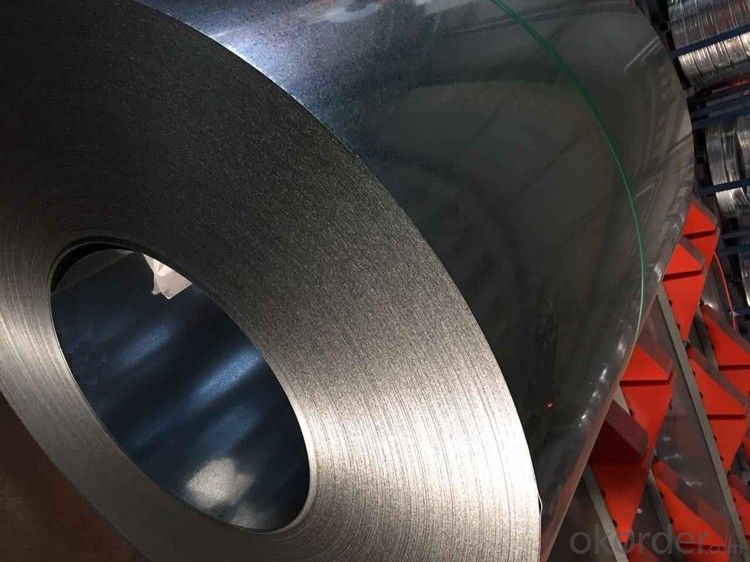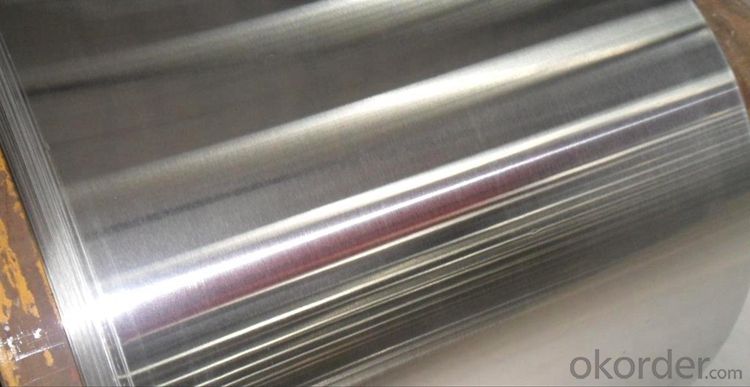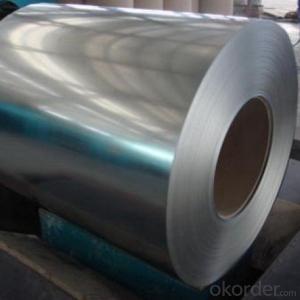Cold Rolled Stainless Steel 2.0mm Made in China
- Loading Port:
- China main port
- Payment Terms:
- TT OR LC
- Min Order Qty:
- 22 m.t.
- Supply Capability:
- 200000000 m.t./month
OKorder Service Pledge
OKorder Financial Service
You Might Also Like
Item specifice
Description for Stainless Steel Coils/Sheets:
Material | 201/202/301/304/304L/310S/316/316L/321/410/420 |
Technique | old Rolled, Cold Drawn, Hot Rolled |
Standard | ASTM,AISI,JIS,GB,DIN,EN |
Thickness | 0.3mm-100mm or as your requirement |
Width | 100mm-3000mm or as your requirement |
Length | 1000mm-10000mm or as your requirement |
Surface Treatment | BA,2B,No.1,No.4,No.8,HL,8K,Brush |
Packing | 1.Export sea worthy package + water proof paper + wooden pallet 2. Max Loading 26.5mt for each 20Gp container 3.Safe loading and fixing Professiona teams 4. Professional shipping line |
Delivery | 25 days after received the 30% deposit of T/T or L/C |
Payment | T/T,30%payment in advance,70%T/T after the copy of B/L or L/c at sight |
Application | Stainless Steel Sheets are widely used in below fields: 1: Construction field, shipping building industry 2: Petroleum and Chemical Industries 3: Food and Mechanical Industries |
Specifications for Stainless Steel Coils/Sheets:
Grade | C ≤ | Si ≤ | Mn ≤ | P ≤ | S ≤ | Ni ≤ | Cr ≤ |
201 | 0.12 | 0.75 | 7.00 | 0.045 | 0.045 | 1.00-1.28 | 13.70-15.70 |
202 | 0.15 | 1.00 | 2.25 | 0.045 | 0.045 | 4.07-4.17 | 14.00-16.00 |
304 | 0.08 | 0.75 | 2.00 | 0.045 | 0.03 | 8.00-11.00 | 18.00-20.00 |
304L | 0.035 | 0.75 | 2.00 | 0.045 | 0.03 | 8.00-13.00 | 18.00-20.00 |
309 | 0.15 | 0.75 | 2.00 | 0.045 | 0.03 | 12.00-15.00 | 22.00-24.00 |
310S | 0.08 | 1.50 | 2.00 | 0.045 | 0.03 | 19.00-22.00 | 24.00-26.00 |
316 | 0.08 | 1.00 | 2.00 | 0.045 | 0.03 | 10.00-14.00 | 16.00-18.00 |
316L | 0.035 | 0.75 | 2.00 | 0.045 | 0.03 | 10.00-15.00 | 16.00-18.00 |
321 | 0.04-0.10 | 0.75 | 2.00 | 0.045 | 0.03 | 9.00-13.00 | 17.00-20.00 |
405 | 0.08 | 0.75 | 1.00 | 0.045 | 0.03 | 0.06 | 11.5-13.5 |
409 | 0.089 | 1.00 | 1.00 | 0.045 | 0.05 | 0.06 | 10.50-11.75 |
410 | 0.15 | 0.75 | 1.00 | 0.045 | 0.03 | 0.06 | 11.5-13.5 |
420 | 0.16-0.25 | 1.00 | 1.00 | 0.040 | 0.03 | 0.06 | 12.00-14.00 |
430 | 0.12 | 0.75 | 1.00 | 0.045 | 0.03 | 0.06 | 16.00-18.00 |
Features of Stainless Steel Coils
(1)Good ductility
(2)Good corrosion resistance
(3)Excellent abrasion resistance and fatigue strength
(4)Good weldability
(5)Oxidation resistant performance
(6)Excellent in high temperature
Detail picture for Stainless Steel Coils/Sheets


Packaging & Delivery for Stainless Steel Coils/Sheets:
Packaging Detail Standard export packing or following customer's demand
Delivery Time: Within 30-40 days after deposit or according to the order quantity
FAQ for Stainless Steel Coils/Sheets:
Q: How can I get the samples?
A: If you need some samples to test ,please pay for the transportation freight of samples and our samples are free for you.
Q: How can I get your price list?
A: Please send us your email or fax and order information – Quantity, Specification (steel type, thickness, width, surface finish), then I can send you the price list.
- Q:How do you determine the hardness of stainless steel sheets?
- To determine the hardness of stainless steel sheets, several methods can be used. One common method is the Rockwell hardness test, which measures the depth of indentation on the surface of the material. In this test, a diamond cone or steel ball is pressed into the sheet at a specific load, and the depth of penetration is measured. The Rockwell hardness value is then determined based on the depth of the indentation. Another method is the Vickers hardness test, which uses a diamond indenter to create a square-shaped indentation. The size of the indentation is measured and converted into a hardness value. This method is often used for thin materials like stainless steel sheets. Brinell hardness test is another technique that can be used. It involves applying a known load to the material using a hardened steel ball and measuring the diameter of the resulting indentation. The hardness value is then calculated based on the applied load and the diameter of the indentation. In addition to these mechanical tests, there are also non-destructive methods like ultrasonic hardness testing and magnetic hardness testing. Ultrasonic testing measures the speed of sound through the material, which is then correlated to hardness. Magnetic hardness testing measures the magnetic properties of the material, which are influenced by its hardness. Overall, the hardness of stainless steel sheets can be determined using various methods depending on the specific requirements and characteristics of the material.
- Q:What are the benefits of using embossed stainless steel sheets in elevator doors?
- Using embossed stainless steel sheets in elevator doors offers several advantages. Firstly, the embossed pattern enhances the aesthetic appeal of the elevator interior, creating a luxurious and sophisticated atmosphere for passengers. Secondly, these sheets are highly durable and resistant to scratches, dents, and corrosion. Elevator doors are prone to damage due to frequent use, but the use of embossed stainless steel sheets ensures that the doors remain in pristine condition for a longer time. This durability reduces maintenance and replacement costs over the elevator's lifespan. Additionally, embossed stainless steel sheets provide a high level of hygiene. The inherent resistance of stainless steel to bacteria and germs makes it an ideal material for elevator doors. The embossed pattern also helps hide fingerprints and smudges, ensuring that the doors stay clean and sanitary with minimal maintenance. Moreover, embossed stainless steel sheets offer excellent fire resistance properties. In case of a fire, these sheets help contain the flames and prevent the spread of fire, providing an added level of safety for passengers in the enclosed space of the elevator. Lastly, embossed stainless steel sheets are easy to clean and maintain. With their smooth surface and resistance to stains and dirt, these sheets can be easily wiped down with a mild cleaner, saving time and effort in the cleaning process. In conclusion, the benefits of using embossed stainless steel sheets in elevator doors include improved aesthetics, durability, hygiene, fire resistance, and ease of maintenance. These advantages make embossed stainless steel sheets a popular choice for elevator manufacturers and building owners alike.
- Q:Are stainless steel sheets environmentally friendly?
- Yes, stainless steel sheets are considered environmentally friendly. Stainless steel is a highly sustainable material that can be recycled indefinitely without losing its properties. It is non-toxic, durable, and resistant to corrosion, reducing the need for replacements and minimizing waste. Additionally, the production process of stainless steel sheets has a lower environmental impact compared to other materials, making it an eco-friendly choice.
- Q:What are the different finishes available for stainless steel sheets?
- Stainless steel sheets come in various finishes, each offering a distinct appearance and level of protection. 1. The most basic and commonly used finish for stainless steel sheets is No. 1 Finish. It is achieved through hot-rolling, resulting in a rough and dull surface with visible grain lines. This finish is typically utilized in industrial applications where aesthetics are not a primary concern. 2. For a brighter and slightly reflective finish, No. 2B Finish is preferred. This cold-rolled finish boasts a smooth surface with a matte appearance, making it ideal for decorative purposes like architectural applications or kitchen appliances. 3. No. 4 Finish, also known as brushed or satin finish, possesses a distinctive look due to its fine polishing grit lines. It is commonly used for decorative applications, such as elevator doors or trim, as it can effectively conceal minor surface imperfections. 4. If a highly reflective finish is desired, No. 8 Mirror Finish is the way to go. It offers a smooth and shiny surface akin to a mirror's polish. This finish is commonly chosen for decorative purposes like architectural features or decorative trim. 5. The Hairline Finish provides a refined and elegant appearance with its fine, brushed texture resembling hair grain. It is commonly employed in decorative and architectural applications. 6. To add texture and visual interest to stainless steel sheets, the Embossed Finish is created through embossing or stamping, resulting in a pattern or design on the surface. This finish is often used for decorative purposes. It is important to note that the availability of these finishes may vary depending on the supplier and the specific grade of stainless steel being used.
- Q:What are the different types of stainless steel sheet finishes?
- There are several different types of stainless steel sheet finishes available, each with its own unique characteristics and appearance. Some of the most common finishes include: 1. No.1 Finish: This is the most basic and widely used finish, also known as "hot rolled annealed and pickled" (HRAP). It has a dull, rough surface with visible grain lines. 2. No.2B Finish: This finish is achieved by cold rolling the stainless steel sheet and then annealing it in a controlled atmosphere. It has a smooth, reflective surface with a slight haze. 3. No.2D Finish: Similar to No.2B, this finish is achieved by cold rolling and annealing. However, it has a slightly rougher surface and is commonly used for applications that do not require a highly reflective finish. 4. No.3 Finish: This finish is achieved by polishing the stainless steel sheet with abrasive belts or brushes. It has a semi-reflective surface with a grainy appearance. 5. No.4 Finish: Also known as "brushed finish," this is achieved by using fine abrasive belts or brushes to create a consistent, linear grain pattern on the surface. It has a matte appearance and is commonly used in architectural and decorative applications. 6. No.6 Finish: This finish is achieved by further polishing the stainless steel with finer abrasives, resulting in a smoother and more reflective surface. 7. No.7 Finish: Similar to No.6, this finish is achieved by using even finer abrasives, resulting in a highly reflective surface with a mirror-like appearance. 8. No.8 Finish: Also known as "mirror finish," this is the highest level of polish achievable on stainless steel. It has a flawless, reflective surface that is often used in decorative and high-end applications. In addition to these standard finishes, there are also specialized finishes available, such as embossed, patterned, or colored finishes, which can further enhance the aesthetic appeal of stainless steel sheets. The choice of finish depends on the specific application and desired appearance, with each finish offering its own unique advantages and characteristics.
- Q:Can stainless steel sheets be used for bridge construction?
- Yes, stainless steel sheets can be used for bridge construction. Stainless steel is a highly durable and corrosion-resistant material, making it an excellent choice for bridge construction where exposure to harsh environmental conditions is a concern. Stainless steel sheets offer structural strength, stability, and long-term reliability, making them suitable for various bridge components such as beams, girders, and decking. Additionally, stainless steel's aesthetic appeal and low maintenance requirements further contribute to its suitability for bridge construction projects.
- Q:What are the different methods of cutting stainless steel sheets?
- There are several methods available for cutting stainless steel sheets, depending on the specific requirements and desired precision. 1. Shearing: This is one of the most common methods used for cutting stainless steel sheets. It involves using a shearing machine with sharp blades to cut through the material. Shearing is ideal for straight cuts and is relatively fast and cost-effective. 2. Laser cutting: Laser cutting is a highly precise method that uses a high-powered laser beam to cut through stainless steel sheets. It provides a clean and smooth cut, and can be used to create intricate designs or complex shapes. Laser cutting is widely used in industries that require high precision and quality finishes. 3. Plasma cutting: Plasma cutting uses a high-temperature plasma arc to melt through stainless steel sheets. This method is suitable for cutting thick stainless steel sheets or materials with high conductivity. Plasma cutting offers fast cutting speeds and can handle various shapes and thicknesses. 4. Waterjet cutting: Waterjet cutting involves using a high-pressure jet of water mixed with abrasive particles to cut through stainless steel sheets. This method is highly versatile and can create complex shapes with high precision. Waterjet cutting is also a cold cutting process, which means it does not produce heat-affected zones or alter the material's structure. 5. Abrasive cutting: This method uses an abrasive wheel or disc to grind and cut through stainless steel sheets. It is commonly used for rough cuts or in situations where other methods are not feasible. Abrasive cutting can be done manually or with the help of power tools, such as angle grinders. Each of these cutting methods has its own advantages and limitations, and the choice of method depends on factors such as the thickness of the stainless steel sheet, desired precision, budget, and production requirements.
- Q:Are stainless steel sheets suitable for railway station platforms?
- Yes, stainless steel sheets are suitable for railway station platforms. They are durable, resistant to corrosion, and can withstand heavy foot traffic, making them ideal for this application. Additionally, stainless steel sheets are easy to clean and maintain, ensuring a safe and aesthetically pleasing platform for passengers.
- Q:Can stainless steel sheets be used for flooring?
- Certainly, flooring can indeed be made using stainless steel sheets. Stainless steel, being a sturdy and adaptable substance, possesses resistance against corrosion, stains, and scratches, thereby rendering it fitting for areas with heavy foot traffic. It is frequently employed in commercial and industrial environments like hospitals, kitchens, and food processing plants, where cleanliness and hygiene hold paramount importance. Stainless steel flooring imparts a polished and contemporary appearance, is effortless to clean and maintain, and can endure substantial loads and extreme temperatures. Furthermore, stainless steel sheets can be personalized to suit any area and can be installed with different finishes to augment slip resistance.
- Q:What are the features of stainless steel plates?
- Can withstand oxalic acid, sulfuric acid iron sulfate, nitrate, nitrate acid and hydrofluoric acid, sulfuric acid copper sulfate, phosphoric acid, formic acid and acetic acid and various acid corrosion, widely used in chemical, food, medicine, papermaking, petroleum, atomic energy industry, as well as construction, kitchen utensils, cutlery, household appliances, vehicles of all kinds of parts.
1. Manufacturer Overview |
|
|---|---|
| Location | |
| Year Established | |
| Annual Output Value | |
| Main Markets | |
| Company Certifications | |
2. Manufacturer Certificates |
|
|---|---|
| a) Certification Name | |
| Range | |
| Reference | |
| Validity Period | |
3. Manufacturer Capability |
|
|---|---|
| a)Trade Capacity | |
| Nearest Port | |
| Export Percentage | |
| No.of Employees in Trade Department | |
| Language Spoken: | |
| b)Factory Information | |
| Factory Size: | |
| No. of Production Lines | |
| Contract Manufacturing | |
| Product Price Range | |
Send your message to us
Cold Rolled Stainless Steel 2.0mm Made in China
- Loading Port:
- China main port
- Payment Terms:
- TT OR LC
- Min Order Qty:
- 22 m.t.
- Supply Capability:
- 200000000 m.t./month
OKorder Service Pledge
OKorder Financial Service
Similar products
New products
Hot products
Hot Searches
Related keywords

































